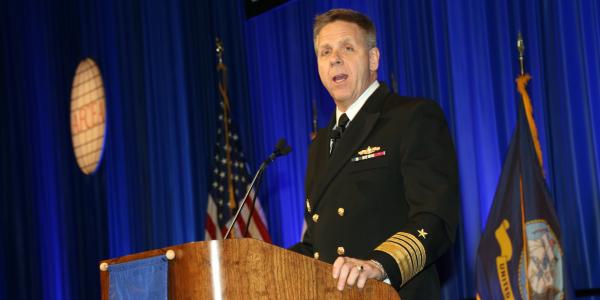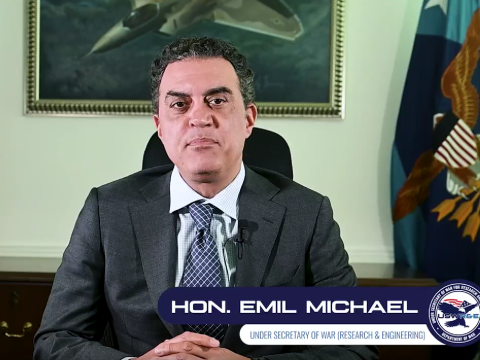U.S. Navy Taking Risks by Pushing Modernization in Favor of Forward Deployed Fleet Readiness, Admiral Warns
The integrity of the U.S. Navy suffers today because the integrity of the force depends on capability, capacity and readiness—three areas that have taken a beating with a Navy at war for 15 years and the budget shortfalls threatening so many military arenas, said Adm. Philip Davidson, USN, commander of U.S. Fleet Forces Command, at West 2017.
The integrity of the U.S. Navy suffers today because the integrity of the force depends on capability, capacity and readiness—three areas that have taken a beating with a Navy at war for 15 years and the budget shortfalls threatening so many military arenas, said Adm. Philip Davidson, USN, commander of U.S. Fleet Forces Command.
The dilemma of a stressed service is not always apparent, mainly because the forces operating at the tip of the spear—those who deploy for global operations—get the funding and attention needed to maintain fleet readiness, he said Wednesday at the West 2017 conference, co-sponsored by AFCEA International and the U.S. Naval Institute.
“But we’re taking risk in surge and maintenance and modernization to make that happen,” Adm. Davidson said.
Modernization is uneven when you're short on money, offers Adm. Davidson, #WEST2017
— Sandra Jontz (@jontz_signalmag) February 22, 2017
Force generation must accomplish four things: rotate the force on a routine basis; surge the force; find the time and space to maintain and modernize the force; and reset the whole process in stride.
“When [force generation] is fully resourced and properly executed, in terms of policies and practices, it works great,” Adm. Davidson said. “When it’s not, that’s a different problem. And we chose to take risks in some areas in that force generation.”
For the Navy, the four force generation elements also define force readiness, Adm. Davidson said. And within the Navy’s force generation process, leaders have prioritized the rotation component of getting ships and sailors to the combat zone. “We deliberately prioritize the readiness of the stuff we send forward,” the Navy leader said. “Those men and women get everything: our best capability, the most people, the fuel, the parts.”
But the approach, obviously, has created problems in other areas, he countered. “We’re a little bit on the ragged edge … in surge and on the ragged edge in maintenance and modernization because we don’t have the resources to execute those.”
We're on the ragged edge of a surge & ragged edge of force generation because of lack of resources, Adm. Davidson says #WEST201
— Sandra Jontz (@jontz_signalmag) February 22, 2017
Fiscal year 2016 served as the inflection point that drew a much-needed but painful change, he offered. That year Navy leaders decided it was no longer acceptable to take the risk of ignoring those other key areas. “FY16 … was the first time we did not get end-of-year monies to buy down the risk—meaning make advance purchases—in the subsequent fiscal year.”
The insidious nature of budget woes is important to note, he continued. “It makes modernization uneven when you are short of accounts, and truly the only fungible monies in those accounts are two things: they are flying hours and surface ship availabilities that happen in the commercial industry.”
One key adverse outcome of the cutbacks has been the impact on the the proficiency of naval aviators. “When you cut back flying hours to the extent that you’re really only aviating, navigating and communicating—and not truly doing the warfighting things—you have sufficiency, but you don’t have proficiency.”
Aviation tops Adm. Davidson’s short list of top concerns, he said. “The number of available aircraft we have, our ability to resource flying hours and create proficiency in our aviators … is my number one budget concern.”
With all of that said, Adm. Davidson offered, there are some things going right for force generation. It has generated clear road maps and fleet architectures for the way forward, for example, and what the Defense Department needs from the Navy in the future.
Another example of a successful byproduct is Optimized Fleet Response Plan (OFRP), the service’s architecture framework to generate ready forces. “It has given us the insight into these four elements to let us understand where the readiness risk is taken and where readiness value is returned,” Adm. Davidson said.
The framework identifies early manning requirements and determines early the proper crew make up for the mission.





Comments